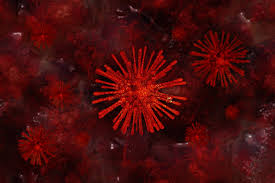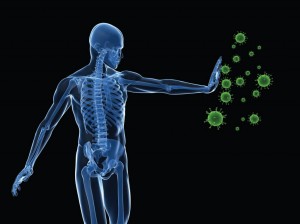Abstract
Cells establish the asymmetrical distribution of phospholipids and alter their distribution by phospholipid scrambling (PLS) to adapt to environmental changes. Here, we demonstrate that a protein complex, consisting of the ion channel Tmem63b and the thiamine transporter Slc19a2, induces PLS upon calcium (Ca2+) stimulation. Through revival screening using a CRISPR sgRNA library on high PLS cells, we identify Tmem63b as a PLS-inducing factor. Ca2+ stimulation-mediated PLS is suppressed by deletion of Tmem63b, while human disease-related Tmem63b mutants induce constitutive PLS. To search for a molecular link between Ca2+ stimulation and PLS, we perform revival screening on Tmem63b-overexpressing cells, and identify Slc19a2 and the Ca2+-activated K+ channel Kcnn4 as PLS-regulating factors. Deletion of either of these genes decreases PLS activity. Biochemical screening indicates that Tmem63b and Slc19a2 form a heterodimer. These results demonstrate that a Tmem63b/Slc19a2 heterodimer induces PLS upon Ca2+ stimulation, along with Kcnn4 activation.
Introduction
The asymmetrical distribution of molecules across membranes is a fundamental property of cells. For instance, phospholipids are asymmetrically distributed at the lipid bilayer on the plasma membranes. Phosphatidylserine (PS) and phosphatidylethanolamine (PE) are restricted to the inner side of the plasma membranes, while phosphatidylcholine (PC) and sphingomyelin (SM) are mainly located at the outer layer of the membrane1,2,3,4. However, in some physiological situations, this asymmetry is quickly altered by phospholipid scrambling (PLS) as cells respond to changes in surroundings or to intrinsic cues; in both cases, the consequence of such scrambling exposes PS to the cell surface. Exposed PS functions as a scaffold for coagulation factors on activated platelets when bleeding occurs5. Cell surface PS also functions as an “eat-me signal” for dead cells to be engulfed by phagocytes6,7,8,9. However, the molecular identity of scramblases was unknown for decades.
Previously, using cDNA library screening, we discovered the ubiquitous scramblases Tmem16F and Xkr8, which induce PLS in the coagulation reaction and the clearance of dead cells, respectively10,11,12,13,14. Nevertheless, in the absence of these two proteins in Ba/F3 cells (pro-B cell line), PLS is still induced under high Ca2+ ionophore stimulation, suggesting that other PLS systems exist on plasma membranes. To search for such factors, we performed revival screening using a CRISPR sgRNA library, which led to the identification of PLS-inducing factors through the enrichment of sgRNAs by reconstitution of the sgRNA library15. As a result, we identified the mechano-sensitive channel Tmem63b16,17,18,19, the thiamine transporter Slc19a220, and the Ca2+-activated K+ channel Kcnn421,22,23,24,25 as factors regulating PLS. Importantly, Tmem63b and Slc19a2 form a heterodimer, which is activated upon Ca2+ stimulation, together with Kcnn4 activation. Additionally, epilepsy and anemia-related Tmem63b mutations led to continuous PLS activity. These results demonstrate that the ion channel/metabolite transporter complex promotes PLS upon Ca2+ stimulation, along with Kcnn4 activation, alterations in which could be responsible for human diseases.
Results
Establishment of high phospholipid-scrambling cells
Tmem16F and Xkr8 have been identified as Ca2+-dependent and caspase cleavage-dependent scramblases, respectively10,12. These two scramblases-elicited phospholipid scrambling (PLS) activity can be detected by an uptake of the fluorescent lipid NBD-PC in the pro-B cell line Ba/F3. When cells were stimulated with low concentration (0.5 µM) or high concentration (3.0 µM) of the Ca2+ ionophore A23187 in Lipid buffer (HBSS with 1 mM CaCl2 and 1 mM MgCl2) at 4 °C for 10 min, they showed similar PLS activity (Fig.1a top). After deleting both Tmem16F and Xkr8 in Ba/F3 cells (BDKO cells), the PLS activity was greatly inhibited at 0.5 µM A23187 stimulation, indicating that these scramblases, especially Tmem16F, contributed to this process (Fig.1a bottom left). However, when stimulated with 3.0 µM A23187, BDKO cells promoted high PLS activity (Fig.1a bottom right), suggesting the existence of unknown Ca2+-dependent scramblase(s) in BDKO cells. To identify the unknown scramblase(s), we planned to isolate a cell population with high PLS activity by a repeated sorting approach10,15. BDKO cells were stimulated with 0.5 µM A23187, applied to a PC uptake assay, used to collect high PC uptake cells with flow cytometry, and expanded for the next round of sorting (Fig.1b). After repeating this process for a total of 19 times, we obtained high PLS cells, hPC19, that exhibited PLS activity even in response to 0.5 µM of A23187 (Fig.1c). PLS activity can be examined not only by PC uptake, but also by phosphatidylserine (PS) exposure10. When stimulated with 3.0 µM A23187 in Annexin buffer (10 mM HEPES (pH7.4), 140 mM NaCl, 2.5 mM CaCl2) at room temperature, PS exposure in parental BDKO cells reached maximum within 10 min, while that in hPC19 cells reached maximum within 4 min (Fig.1d), confirming successful generation of high PLS cells.
Identification of Tmem63b as a PLS-inducing protein
Next, we sought to perform a CRISPR/Cas9 sgRNA library screening using hPC19 cells to find factors involved in Ca2+-dependent PLS. In particular, we decided to apply a revival screening approach where critical sgRNAs can be identified through reconstitution of an enriched sgRNA library to prevent targets loss due to growth defects possibly caused by the target sgRNAs15. As shown in Fig. 2a, hPC19 cells were infected with lentiviral sgRNA library, applied to the PC uptake assay, and subjected to flow cytometry for sorting of PC uptake-negative cells. After genomic (g) DNA purification from the sorted cells, PCR was performed using the purified gDNA to amplify the sgRNA-encoding region. Subsequently, the enriched sgRNA libraries were generated by inserting the amplified PCR products into the lentiviral vector, followed by the next round of screening. After three rounds of sgRNA screening (sgPC3) using enriched sgRNA library, approximately 23% of PC uptake-defective cells were collected and analyzed by next-generation sequencing (NGS) and mapping (Fig.2b). In this sgRNA library, six sgRNAs in average were designed for each gene, and identified sgRNAs containing more than three target sgRNAs among six ones were presented as the total count of mapped targets: the sum of sgRNAs for mapped targets was displayed as a total read and ranked based on the obtained read counts (Fig.2c, Supplemental Data 1). As a result, Stim1 ranked top with the highest reads and 6-mapped targets. Stim1 is known as a single transmembrane region-containing protein located at the endoplasmic reticulum (ER), interacting with the Ca2+ channel Orai1 on the plasma membranes (PM) to mediate Ca2+ influx26. To investigate whether Stim1 is associated with the PLS activity, sgRNA against Stim1 was introduced in parental BDKO cells and a knockout clone was generated (Supplemental Fig. 1a). Consequently, deletion of Stim1 resulted in delayed PS exposure, compared to parental BDKO cells when stimulated with A23187 (Fig. 2d top second left). Exogenous expression of Stim1 into Stim1−/− BDKO cells restored PS exposure (Fig. 2d top middle), demonstrating that Stim1 contributes to Ca2+-dependent PLS. Conversely, Stim1 itself is obviously not a scramblase on the plasma membranes because it exclusively localizes to the ER. We then questioned which molecule is a potential candidate for the scramblase. From our NGS results, we focused on one multi-transmembrane region-containing protein, localized at the plasma membranes, called Tmem63b (CSC1-like protein), that has been suggested to function as a mechano-sensitive cation channel16. Although amino acid sequences are different between Tmem63b and Tmem16 family members, Tmem63b bears highly structural similarity to the Tmem16 family27, which consists of both ion channels and scramblases28,29, implying that Tmem63b promotes PLS among its multiple functions. To validate this hypothesis, sgRNA against Tmem63b was introduced into BDKO cells and a knockout clone was obtained (Supplemental Fig. 1b). As a result, PS exposure was greatly reduced in Tmem63b−/− BDKO cells (Fig.2d top second right) but was rescued with exogenous expression of Tmem63b (Fig.2d top right). It is noted that deletion of Stim1 or Tmem63b did not cause a significant change in calcium influx mediated by A23187 (Supplemental Fig. 1c). Among the Tmem63 family consisting of 3 members, Tmem63b exhibited the strongest PLS activity in Stim1−/− cells, compared to Tmem63a and Tmem63c (Supplemental Fig.1d). This result also implied that Tmem63b does not require Stim1 for its activation.
In order to examine whether Stim1 is dispensable in Tmem63b-mediated PLS, Stim1−/− and Tmem63b−/− BDKO cells were established. Although Stim1−/− and Tmem63b−/− BDKO cells rarely exhibited PS exposure and PC incorporation (Fig.2d bottom left, Supplemental Fig. 1e), expression of exogenous Tmem63b induced high PS exposure and PC incorporation activities (Fig.2d bottom middle, Supplemental Fig. 1e), demonstrating that Tmem63b promotes Ca2+-dependent PLS without Stim1. Similarly, the introduction of exogenous Stim1 into Stim1−/− and Tmem63b−/− BDKO cells promoted PLS activity, indicating that Stim1-induced PLS does not require Tmem63b (Fig.1d bottom right, Supplemental Fig. 1e).
When Orai1 was deleted in Stim1−/− and Tmem63b−/− BDKO cells restored with Stim1, PS exposure was inhibited while exogenous expression of wild-type (WT), but not the severe combined immunodeficiency-derived mutant R91W30, rescued the phenotype (Supplemental Fig. 2a), suggesting that Orai1-mediated Ca2+ influx at the ER-PM contact site is critical for Stim1-dependent PLS. Indeed, real-time imagining by super-resolution microscopy showed that PS exposure initiated at the ER-PM contact site where Stim1-tagRFP was enriched and spread to whole cells afterward (Supplemental Fig. 2b). This result indicates that A23187 induces Ca2+-release from ER as previously reported, followed by promotion of store-operated Ca2+ entry31,32.
On the other hand, another ER-PM contact site protein, E-syt133 or SNARE proteins such as Snap23 and Stx4a34 (identified by revival screening), were not significantly involved in Stim1-dependent PLS unlike Orai1 (Supplemental Fig. 3a), suggesting that Stim1-dependent PLS requires an unknown PLS-inducing factor (here, we defined it as an endoplasmic reticulum-plasma membrane scramblase, epSCR) at plasma membranes. When these proteins (Orai1, E-syt1, Snap23, and Stx4a) were deleted in Tmem63b-expressing Stim1−/− and Tmem63b−/− BDKO cells, they did not cause significant change in PLS (Supplemental Fig. 3b). Taken together, these results indicate that there are two additional pathways for PLS, expanding beyond the known pathways of Tmem16 and Xkr: Tmem63b-dependent PLS and Stim1/Orai1-mediated epSCR-dependent PLS (Fig. 2e). For further analyses in this study, we focused on Tmem63b-mediated PLS more than Stim1/Orai1-dependent one.
High PLS activity by disease mutants of Tmem63b
According to a recent report35, TMEM63B is mutated in patients with severe developmental and epileptic encephalopathy (DEE), intellectual disability, severe motor and cortical visual impairment, and progressive neurodegeneration in the brain (Supplemental Fig. 4a). Additionally, most patients’ symptoms are accompanied by hematological abnormalities such as macrocytosis and hemolytic anemia35. Currently, ten distinct variants of TMEM63B mutations have been identified in 16 patients. The original amino acids of mutant V44M, R433H, D459E, I475del, and R660T, are well conserved among several species (Fig.3a). It is noteworthy that most mutations are in the transmembrane regions of the protein (Fig.3b). To investigate whether these mutations affect the PLS activity, we expressed the mutants in Tmem63b−/− BDKO cells and examined their activity. According to previous results, Tmem63b-expressing BDKO cells exhibited PS exposure in less than 1 min at room temperature after A23187 stimulation (Fig.2d), given this time constraint, it is difficult to compare the PLS activity between WT and mutants. To overcome this issue, temperature was decreased to 4°C to delay the reaction speed (Supplemental Fig. 4b). Although Tmem63b WT failed to expose PS without Ca2+ ionophore stimulation, most of the Tmem63b variants exhibited continuous PS exposure even without stimulation (Fig.3c top, Fig.3d) which was further enhanced by the stimulation with 3.0 µM A23187 (Fig.3c bottom). Intriguingly, the degree of PLS activity is highly correlated with the severity of hematological disorders. For instance, mutants causing high PLS activity, I475del, and V44M, show severe hemolytic anemia, while moderate PLS activity-inducing mutants, D459E and R660T, lead to mild macrocytic anemia35, suggesting that these mutants are gain-of-function mutants with different degrees in their activity. On the other hand, one mutant, R433H, that displays abnormalities in red blood cells but fails to cause anemia in patients (Supplemental Fig. 4a), resulted in no PLS activity with or without Ca2+ ionophore stimulation (Fig.3c). When localization of the R433H was examined, it localized at the plasma membranes, suggesting that the R433H mutant lost PLS activity because of a loss of function, but not of a change in localization. Although TMEM63B is reported to work as a cation channel to permeate Ca2+16,19,36, chelating Ca2+ by BAPTA-AM had only minor effects on PS exposure activity in Tmem63b mutants-expressing cells (Supplemental Fig. 5), suggesting that Tmem63b-mediated ion flux is not a major factor to induce PLS. Considering that the same concentration (1 µM) of BAPTA-AM completely inhibits Tmem16F mutants-induced PLS10, we can conclude that BAPTA-AM is sufficient to chelate Ca2+ at resting condition….







